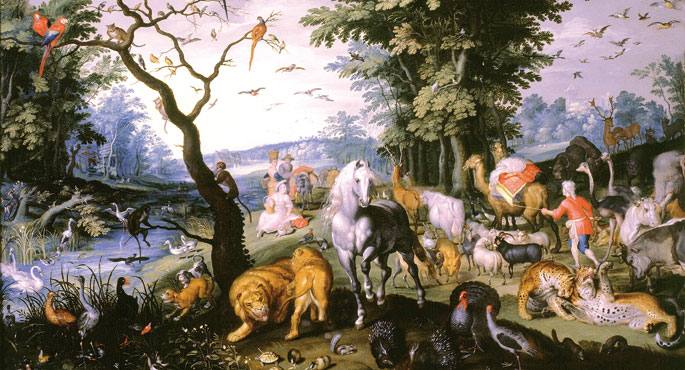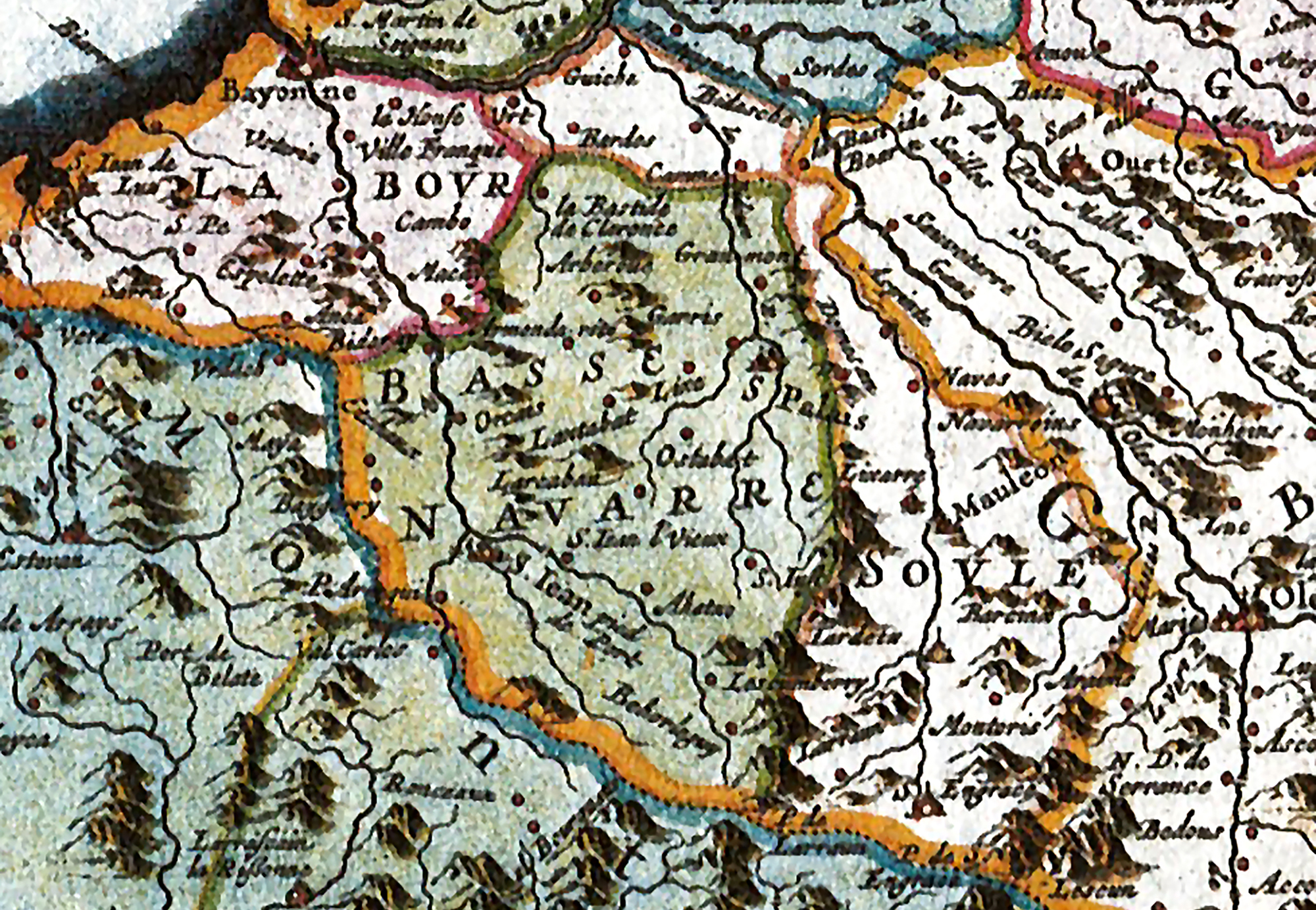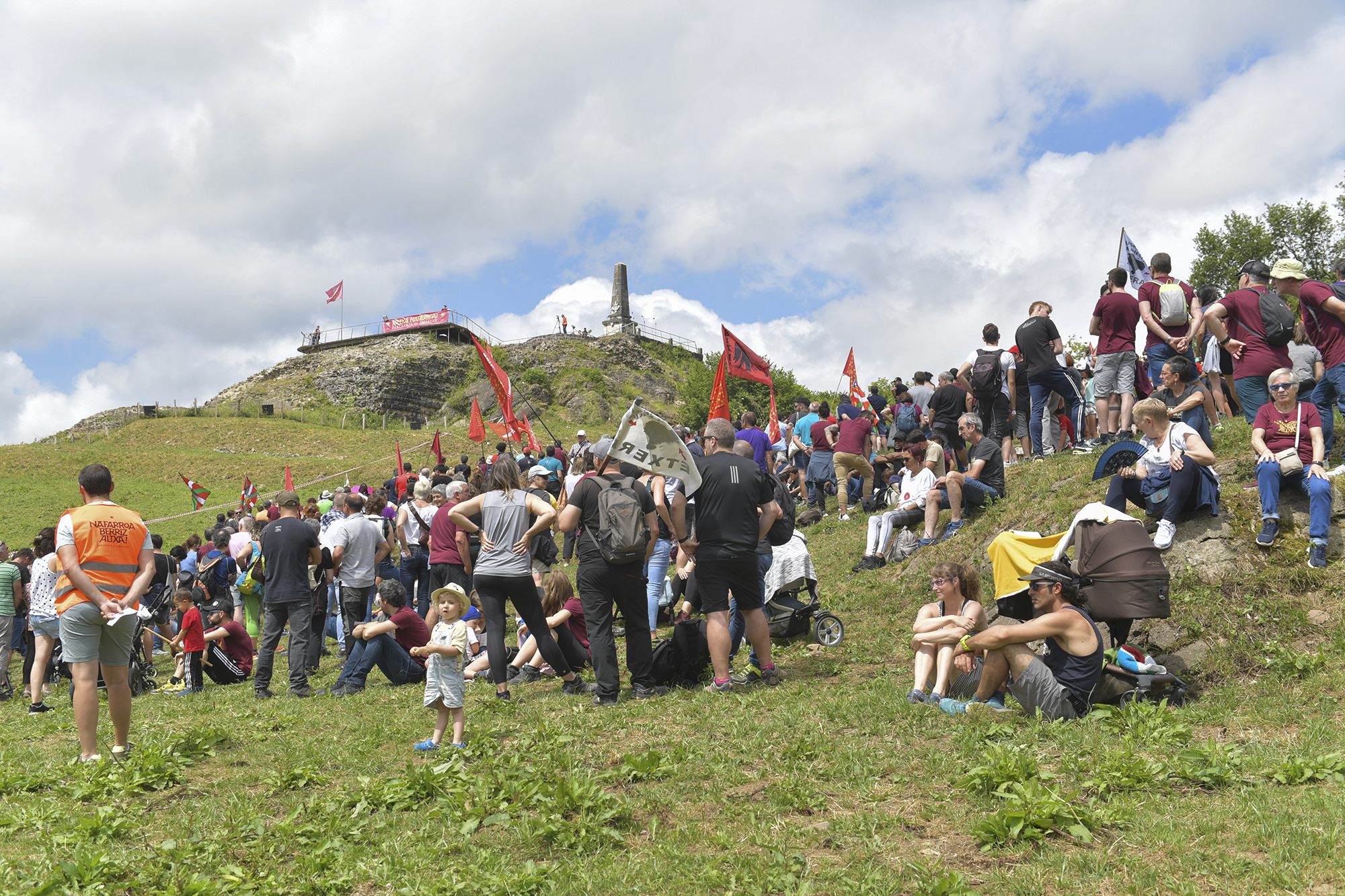When Tubal came to Navarra
- In 1628, a writer with the nickname of García de Góngora published the apologetic history, extending the myth of tubalism to Navarra. The intention was to confront the supposed rights of Aragon and Castile over the Navarre kingdom, and not, as the current Navarrism argues, to pay tribute to the unity of Navarre and Castile.

In the sixteenth century the stories of the kingdom in Navarre were not printed. Some were written, especially in the first forty years of the century: there are the books of Juan de Jaso and Sancho de Alvear, both of Genealogy of the Kings of Navarra, or the Chronicle of the Excellent Kings of Navarra by Diego Ramírez Avalos de la Piscina; in the second half of the century we have quoted the Summary of the Surname of Reta. None had been printed: they were all in the form of manuscripts. The most important history of Navarre that was printed in the 16th century was written by a Guipuzkoan, Esteban de Garibay, in his Compendium History, published in 1571.
In the 17th century, however, the history of Navarra is very varied: From the catalogue of the bishops of Pamplona of Prudencio de Sandoval (1614) to the prolific work of the official chronicler of the kingdom José de Moret, without forgetting the great Pedro de Agramont Historia de Navarra, which also remained unprinted. And surely, in this renewal of the Navarre historiography of the seventeenth century, the apologetic history of Navarre deserves a special place. Published in 1628 by an author who used the nickname of García de Góngora and Torreblanca, he brought to Navarra a series of myths (tubalism, Cantabrian) that spread throughout the western provinces and proposed a new strategy to explain the conquest, or rather to avoid it, and to oppose the theories that were being opened in Castilla y Aragón. Interestingly, some have seen a precursor of Navarrism in this work by García de Góngora that places Navarra in the field of Basque historiography.
“Barbaric and Unknown People”: Basques and Goths Apologetic
History of García de Góngora is a militant, controversial book that discusses with all the historians of the environment. In approving the book, Mr. Pedro de Monreal said that “in this kingdom what happened in some customs, that they do not have guards, that they steal their rights”, and to claim those lost rights he wrote his book García de Góngora. And to do so, he brought to Navarre some historical theories that until then were extended in Bizkaia and Gipuzkoa, of which we are now interested one: the tubalismo.En Spanish historiography, several writers had defended in the Middle Ages that the first peninsular settlers arrived with Tubal, after the confusion of the languages of the
tower of Babel. Tubal, in the Bible story, was the fifth son of Jafet and the grandson of Noah. In the sixteenth century, Gipuzkoan historians such as Juan Martínez de Zaldibia or Esteban de Garibai added another element to the tradition that the first lineages were brought by Tubal to the Iberian Peninsula: Tubal brought the Basque language, which shows that the Basques are the oldest inhabitants of Spain. In the 17th century, García de Góngora transferred this theory to Navarra: “Two languages are spoken in this kingdom,”
says García de Góngora, “the Basque and the romance, but the Basque is the first and the original, because he was the creator of the patriarchal kingdom Tubal.” Tubalism was not just a distraction of wise men. It also had political consequences. When the Navarros proclaimed to be heirs of Tubal, García de Góngora claimed the antiquity of the kingdom and, by the way, wanted to delegitimize the theories that justified the conquest of 1512 in Castilla y Aragón.En Castilla, in the seventeenth century, the old historical
explanation of goticism gained strength. Formed in the Middle Ages, according to this theory, the Goths, after the eviction of the Romans, managed, for the first time in history, to unite the whole of Spain. Lost the primitive Gothic unity as a consequence of the conquest of Muslims, the right to the reconquest of all the peninsular territories that belonged only to the Castilian kings, with the Castilian kings being the only true heirs of the Goths. In the fight against Muslims it was to be welcomed the effort and help of the kingdoms of Navarre and Aragon, but the inheritance of the Goths corresponded to the kings of Castile. Thus, Ferdinand the Catholic did not conquer Navarre, but recovered some of the property of the Goths that belonged to him as king of Castile.
On the other hand, the historians of Aragonese, for a long time, already had another historical narrative, that of the kingdom of Sobrarbe. In this narrative, after the arrival of the Muslims, the Christians founded the kingdom of Sobrarbe in the Pyrenees and, eventually, Aragon and Navarre would emerge from that kingdom, but it had always been under its dominion and was part of that mythical kingdom of original Sobrarbe. Regarding the conquest of Navarra, the Castilian goticism and this Aragonese theory reached similar conclusions: Ferdinand the Catholic did not conquer Navarre, but, to the extent that he was king of Aragon, the kingdom of Sobrarbe had lost
a part, had recovered the inheritance of the kings of Sobrarbe.En the seventeenth century, against these two theories, tubalism had two components to attract Navarros historians. On the one hand, it was a new antiquity to the kingdom: it could have been an old kingdom of Sobrarbe, but not older than the Basque people, who came from Tubal. And, on the other hand, it ensured the honesty of the Basques: the Basques, unlike the Goths, were originally from the peninsula. Along with those of the tribe of Tubal, the Goths, after all, “were barbaric and unknown people,” “strange people,” who came from the province of Gotia.” In a culture that gave great importance to antiquity, the supposed rights of Aragon and Castile were unprecedented, compared to the people of origin in Tubal.
Until recently,
we believed that behind the pseudonym of García de Góngora was a writer named Juan de Sada. In recent years, Isabel Ostolaza, after researching the subject, has proposed that apologetic history is probably a teamwork. Along with this interesting contribution, the book by García de Góngora has tried to evolve towards navarrism, until it became the precursor of some attitudes today. In the apologetic history, since the author or authors defended that the conquest was not a conquest in itself: the Navarros surrendered voluntarily and, as a consequence, a change of dynasty occurred in Navarra. According to Ostolaza, this interpretation “gave rise to a historiographical line that is the basis for today’s fuerist navarrism”. Ostolaza has sought antecedents to give dignity to a historiographical interpretation of the new franc. However, if the interpretation of García de Góngora is transferred to its context, the conclusion is quite diferente.En the 16th, 17th and 18th centuries, Navarros historians, in
general, did not want to admit that the conquest was a conquest. The conquest would give the new kings the right to abolish the forces and establish the form of government they would like in Navarre. And precisely to avoid this, historians of the kingdom were inventing other explanations: the restoration in the sixteenth century; the occupation contrary to the law in the eighteenth century, by the hand of chronicler Francisco Aleson. In the 17th century, while from Castile and Aragon dangerous restorations were proposed, García de Góngora proposed voluntary surrender. The consequence of denying the character of the conquest was clear: the new kings “like the old kings, must respect the powers and freedoms of the Navarros”. Apologetic history, talking about tubalism or conquest, because it was a political discourse, for political ends. It was not, as Ostolaza believes, to pay tribute to the unity between Navarre and Castile, but, on the one hand, to oppose historical narratives that could justify the conquest from the point of view of Castile and Aragon, and, on the other, to offer historical arguments to avoid some negative consequences that could derive from the conquista.Como it has been said, the book Apologetic History of García
de Gón. And if you dig a little deeper into the text, you can see the details of that militancy. And the superficial similarities are far, truly far from the actual navarrism.
Immersed in the war against the community lords and churches, in 1521, Castile obtained the help of his brother-in-law Enrique de Navarra II.ak, King Francisco I of France, to recover the kingdom of Navarre invaded, conquered and occupied nine years earlier.
Parents Enrike... [+]
Memoria eta aldarrikapen eguna izan da larunbatean Amikuzeko hiriburuan. "Sekulan baino gehiago, gure izanetik aurkitu indarraz, bihar gu girena hazi", izan dira Zabalik elkarteko presidentearen hitzak, Nafarroa Bizirik eguneko ekitaldi ofizialean.
The ideological heirs of the conquerors of the Kingdom of Navarra are today the political parties that manage means such as patriarchal intellectual production and EITB. These heirs continue with the colonization process of Navarre, distorting historical contexts and negating... [+]
The castle of Amaiur (1522), in Baztán, was the last strength of the resistance against the Spanish conquest of the Kingdom of Navarra. The rebels, with their courage, also dominated the kingdom of Spain, challenged by their hearts, sought to rise up against the... [+]
You will easily see Spaniards of a certain age who want to underestimate or reduce the severity of something: “More was lost in Cuba,” recalling the loss of the remains of the colonial empire in 1898. Hungarians also have a similar expression, which is used in the same sense... [+]




















